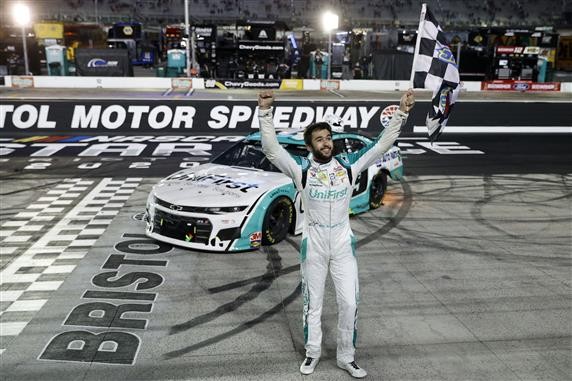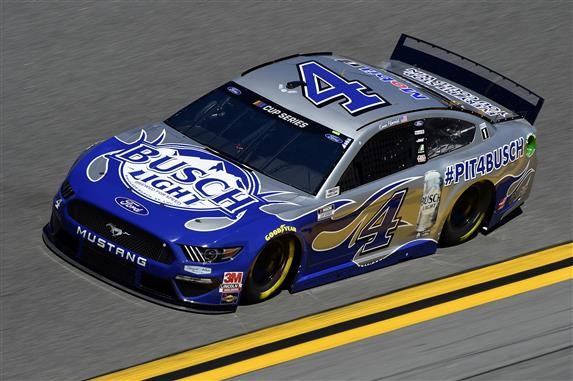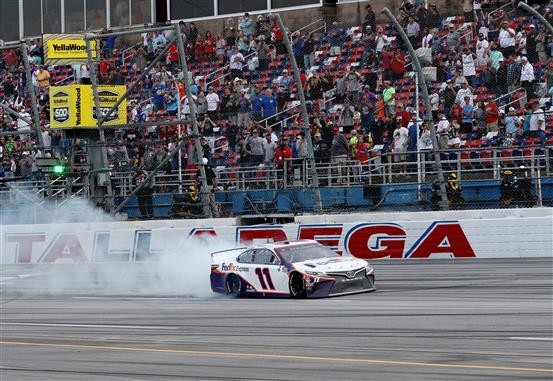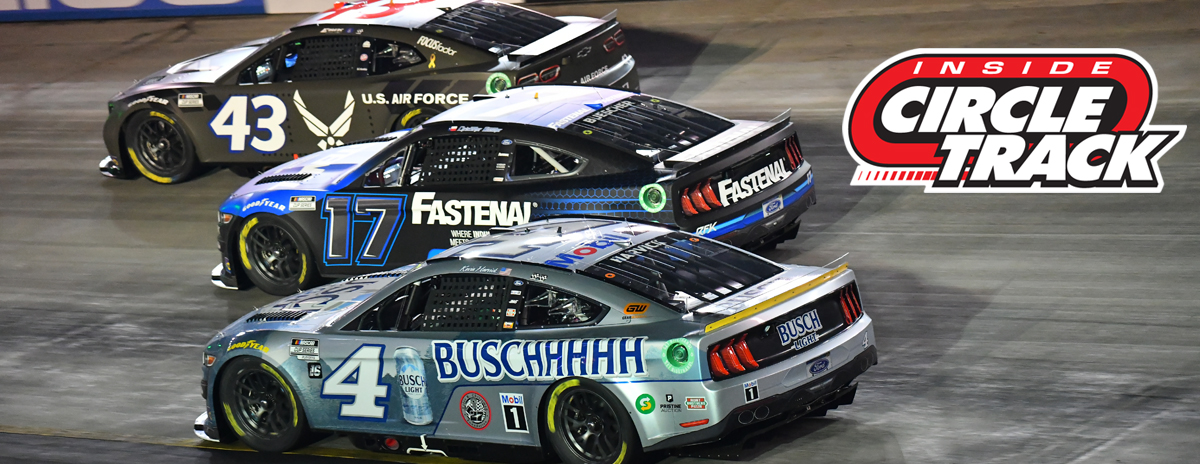Often times when people discuss domination in the NASCAR Cup Series, they tend to do so in terms of a particular team that appears to have an advantage over the competition. There have been seasons in which one organization would have multiple drivers to pile up wins and occupy multiple positions within the top-10 in the series standings.
For example, the four drivers who piloted Toyota machines for Joe Gibbs Racing won 19 of the 36 races contested and had one of its drivers, Kyle Busch, to win the championship in 2019. And those wins were very much evenly distributed among those four drivers.
However, 2020 did not see that type of situation in that several of NASCAR’s top organizations had one driver to score the majority of their organizational victories. Perhaps because of the lack of practice time, the lack of qualifying, quick turnarounds from race to race, back-to-back events at the same tracks, or other restrictions such a personnel limitations, the top teams in the sport experienced a situation in which just one driver accounted for most of their trips to victory lane.
There are four companies that tend to pile up race victories and championships on the NASCAR Cup Series leaving the others to pick up the scraps. Joe Gibbs Racing, Stewart-Haas Racing, Team Penske, and Hendrick Motorsports often account for high percentages of the victory totals in the sport’s top division. And with the exception of Martin Truex, Jr. in 2017 with JGR-supported Furniture Row Racing, every Cup Series title since 2005 has been won by a driver from one of those four organizations.
The “Big-Four” continued their domination in 2020, but there was domination within their own domination.

Chase Elliott was the clear leader at Hendrick Motorsports in 2020(Photo: Getty Images)
Hendrick Motorsports ended the season with the NASCAR Cup Series champion in their midst. At the same time, Chase Elliott was obviously the primary player within that group as he brought home five of the HMS wins while William Byron and Alex Bowman contributed one each and retiring seven-time champion Jimmie Johnson did not visit victory lane at all in this disjointed season.
In comparison, most NASCAR enthusiasts can remember years in which HMS would score double-digit numbers of wins with those checkered flags being more evenly distributed between Johnson, Jeff Gordon, Dale Earnhardt, Jr., Kasey Kahne, Mark Martin and others. While Johnson was winning more often than his teammates, it did not always seem as if he was the lone warrior for the organization as Elliott seemed to be in 2020.

Kevin Harvick earned all but one of SHR’s wins in 2020(Photo: Getty Images)
An even greater example of individual dominance within an organization was seen this year at Stewart-Haas Racing. At first glance, it would appear as if SHR had a stranglehold on victory lane in 2020. However, a closer look would reveal that Kevin Harvick was responsible for nine of that company’s ten triumphs. Only Cole Custer managed a single win for SHR as the result of a dramatic late restart pass in Kentucky.
For comparison, SHR won 12 times in 2018, and yes, Harvick earned eight of those victories. However, each driver within the organization grabbed at least one checkered flag with Clint Bowyer scoring two wins. So, the numbers were at least a bit more even two years ago for the team co-owned by Gene Haas and Tony Stewart.

Denny Hamlin celebrated far more than any other JGR driver in 2020(Photo: Getty Images)
Perhaps the most surprising demonstration of how 2020 was the year of the individual within each team came from Joe Gibbs Racing. This talent-rich operation typically spreads wins out among its competitors. However, in 2020 it was Denny Hamlin who was the clear leader as he collected seven of the team’s nine trophies with former champions Kyle Busch and Martin Truex, Jr. contributing one each.
Conversely, in 2019 when JGR scored that impressive total of 19 wins, Truex amassed seven of them, Hamlin had six, Busch had five, and Erik Jones added one. That even distribution gave way to almost total in-house dominance by Hamlin during this unusual campaign.
Among the ‘Big Four’ the one instance of more evenly distributed wins occurred at Team Penske. There, Brad Keselowski emerged victorious on four occasions with Joey Logano placing first three times and Ryan Blaney chipping in one.
The numbers from within the top teams in 2020 are interesting and clearly indicate that the power player organizations had their own power players within.
Have we reached a time in which NASCAR teams become more like Formula 1 with team orders and clear top dogs such as Lewis Hamilton and Max Verstappen are with Mercedes and Red Bull respectively?
Was it the unusual circumstances of 2020 or is this the sign of a trend toward one driver becoming the face of each organization while others play supporting roles as resources may be allocated toward that one who seemingly has the best shot at a Championship 4 run? Perhaps a more normal season, like we all hope 2021 will provide, can provide more insight.
But as far as this year went, there was no ‘I’ in team but there was an ‘M’ and an ‘E’, and in 2020, three of NASCAR’s four power companies proved to be examples of ‘Team Me’ with one driver in each grabbing the lion’s share of the spoils.
Richard Allen is a member of the National Motorsports Press Association
Respond to this piece on Twitter –> @RichardAllenIDR
or on Facebook –> InsideCircleTrack/Facebook
